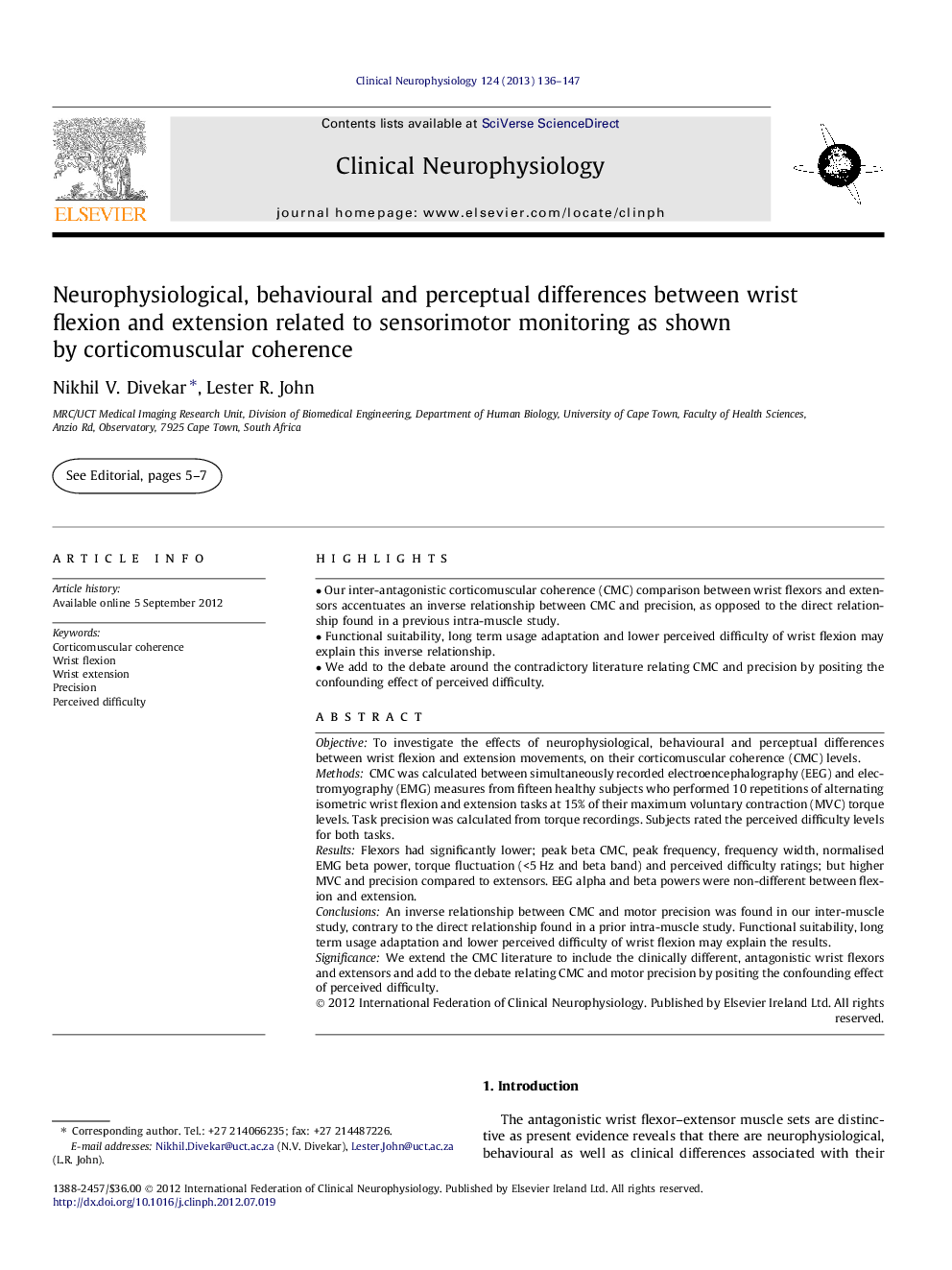| کد مقاله | کد نشریه | سال انتشار | مقاله انگلیسی | نسخه تمام متن |
|---|---|---|---|---|
| 3043043 | 1184968 | 2013 | 12 صفحه PDF | دانلود رایگان |

ObjectiveTo investigate the effects of neurophysiological, behavioural and perceptual differences between wrist flexion and extension movements, on their corticomuscular coherence (CMC) levels.MethodsCMC was calculated between simultaneously recorded electroencephalography (EEG) and electromyography (EMG) measures from fifteen healthy subjects who performed 10 repetitions of alternating isometric wrist flexion and extension tasks at 15% of their maximum voluntary contraction (MVC) torque levels. Task precision was calculated from torque recordings. Subjects rated the perceived difficulty levels for both tasks.ResultsFlexors had significantly lower; peak beta CMC, peak frequency, frequency width, normalised EMG beta power, torque fluctuation (<5 Hz and beta band) and perceived difficulty ratings; but higher MVC and precision compared to extensors. EEG alpha and beta powers were non-different between flexion and extension.ConclusionsAn inverse relationship between CMC and motor precision was found in our inter-muscle study, contrary to the direct relationship found in a prior intra-muscle study. Functional suitability, long term usage adaptation and lower perceived difficulty of wrist flexion may explain the results.SignificanceWe extend the CMC literature to include the clinically different, antagonistic wrist flexors and extensors and add to the debate relating CMC and motor precision by positing the confounding effect of perceived difficulty.
► Our inter-antagonistic corticomuscular coherence (CMC) comparison between wrist flexors and extensors accentuates an inverse relationship between CMC and precision, as opposed to the direct relationship found in a previous intra-muscle study.
► Functional suitability, long term usage adaptation and lower perceived difficulty of wrist flexion may explain this inverse relationship.
► We add to the debate around the contradictory literature relating CMC and precision by positing the confounding effect of perceived difficulty.
Journal: Clinical Neurophysiology - Volume 124, Issue 1, January 2013, Pages 136–147